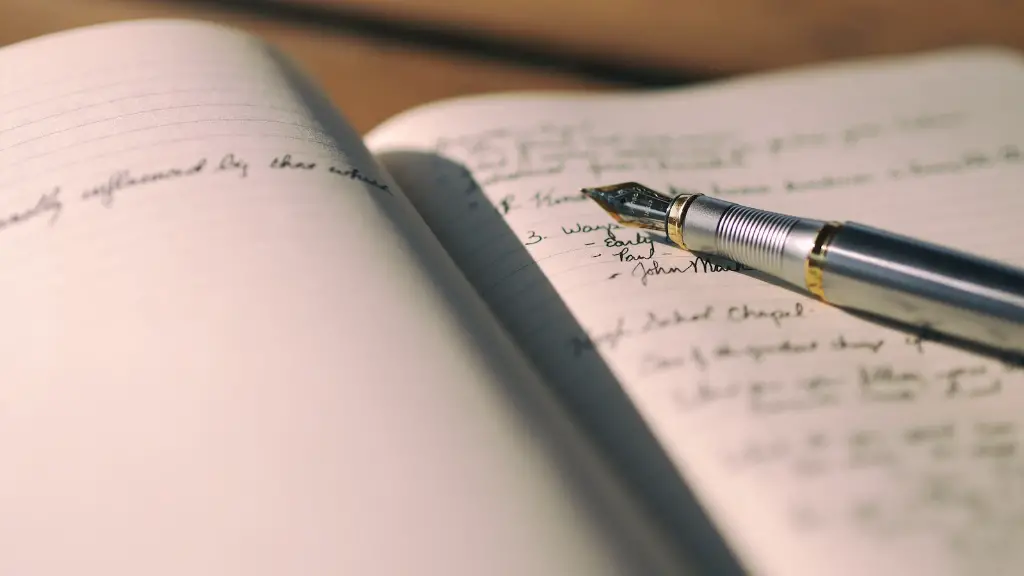What Are Line Breaks In Poetry?
In poetry, line breaks are an integral part of the poem, used to create its visual layout and design. Line breaks are essential for how a poem looks, and how it reads, allowing meaning and rhythm to be created. Line breaks indicate the boundaries between words and create pauses in the lines of poetry. Line breaks also have emotional and symbolic value, as they are meaningful in conveying the poet’s intent and portray the poem’s meaning and message. In addition, certain types of line breaks can be used to create certain effects, such as creating a specific image or portraying a particular emotion.
The structure of a poem is created by line breaks and these breaks are used to divide up the poem into manageable chunks of text. Without line breaks, a poem would be a single mass of text, making it difficult to read and comprehend. Line breaks are also used to help create a sense of rhythm, as each line carries a unique meter and emphasis. This makes poems feel musical and helps give the poem a distinctive sound that can be pleasing and emotionally powerful.
Line breaks can also be used to create specific effects. For example, a poem can use enjambment to cut across phrases and clauses, creating a rhythmic flow that brings the poem alive. Similarly, choppy and short line breaks can create a feeling of tension. Poets have a wide range of choices to pick from, and can choose to use line breaks to create any number of desired effects.
Line breaks also have symbolic value. In certain cases, line breaks can symbolize a separation between two concepts or ideas, as well as create a visual representation of the poem’s structure.
Types of Line Breaks
There are many different types of line breaks and poets can choose whatever type they prefer. Some of the most common types of line breaks are:
- Enjambment: This is where a line breaks mid-sentence without any punctuation to indicate the pause. This creates a sense of continuity within the poem.
- Caesura: This is when a line break includes a punctuation mark, such as a comma or a semi-colon. This type of line break often creates a pause and can indicate a shift in tone or meaning in the poem.
- End-stopping: This is when a line breaks after the end of a sentence. This type of line break often creates a sense of finality and can indicate a shift in the poem.
The type of line break that a poet chooses to use can have a significant effect on the poem. By manipulating the line breaks, poets can create interesting and unique effects. For example, a poem that consists of shorter lines may feel choppy and jarring, while a poem that consists of long lines may feel smoother and more unified.
Why Line Breaks Matter
Line breaks are essential for conveying the poetic message and for creating the poem’s structure. They help create a sense of flow and rhythm, and are also symbols for the poet’s message. Line breaks also have the power to create certain effects and can be used to manipulate the feeling of the poem. By carefully manipulating the line breaks, a poet can create a poem that is powerful and emotionally resonant.
How to Use Line Breaks
To use line breaks properly, it is important to understand how they create meaning. Pay attention to when a pause or a shift in tone occurs in the poem and mark it with a line break. Pay attention to word placement and try to create balance with the line breaks. Also, consider the length of the lines, as longer lines can give the poem a different feel than shorter lines. Lastly, use punctuation to create a pause in the line. This can be used to create tension and drama, or to emphasize a certain part of the poem.
The Power of Line Breaks
Line breaks are an essential part of any poem, as they influence the structure, flow, and emotions that the poem conveys. By carefully manipulating the line breaks, a poet can create a poem that is powerful and emotionally resonant. Line breaks can be used to change the rhythm of a poem, or to emphasize certain words and phrases. When done properly, line breaks can make a poem more meaningful, powerful, and effective.
The Role of Line Breaks in Poetry
Line breaks are an integral part of any poem, as they are the devices that create structure, flow and meaning. Line breaks are essential in creating a sense of rhythm and in conveying the poet’s message. By carefully altering the line breaks, a poet can create an emotional or symbolic effect. Line breaks can also be used to create a certain image or to change the feeling of the poem. Line breaks are an incredibly powerful tool for poets and should be used with care.
The Impact of Line Breaks in Poetry
Line breaks can have a major impact on the way a poem is read and understood. By using the right line breaks, a poet can create a powerful emotional effect, or can emphasize certain words or phrases. Line breaks can also be used to create unusual images or to create symbolic meanings. It is important to understand how line breaks can be used in poetry, as they can significantly enhance a poem and make it more powerful and effective.
Using Line Breaks For Poetic Effect
Line breaks can be used to create a wide range of poetic effects. Line breaks can be used to create a sense of tension or suspense, or to create a smooth, flowing rhythm. By cutting across phrases and sentences, a poet can create interesting images and convey complex meanings. Line breaks can also be used to create pauses or to emphasize certain words and phrases. With careful thought and consideration, a poet can use line breaks to create powerful and meaningful effects.



